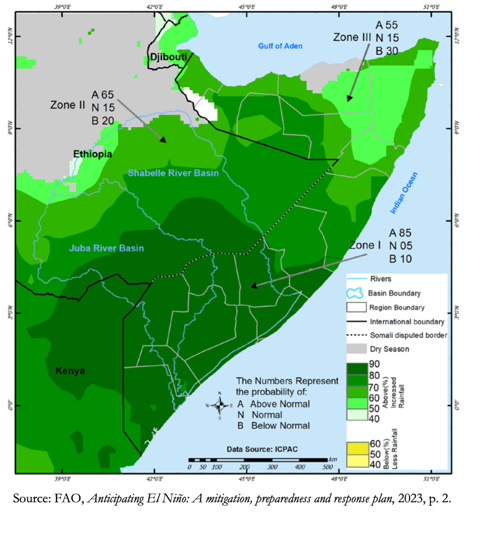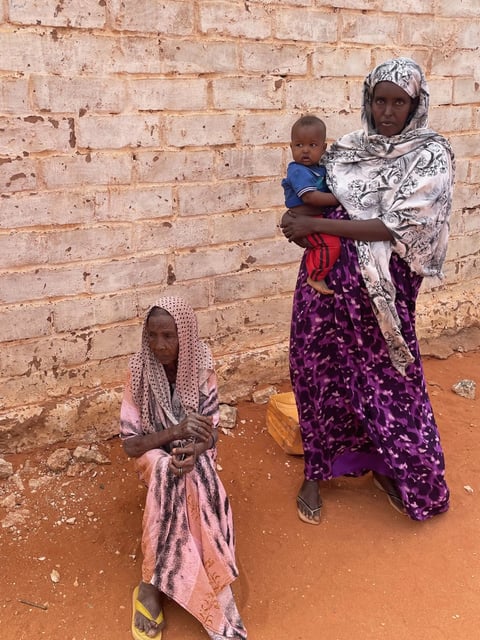Our teams are currently away, the page serves only as a portfolio. We apologize for the inconvenience, Salamu Alaykum.
Impending Super El Niño: Somalia Braces for Severe Flooding
A powerful Super El Niño is forecasted, raising alarm for potentially devastating floods in Somalia. Urgent preparations are underway as the region races against time.
Arno J.
10/10/20233 min read


1.
2.
3.
4.
RACE AGAINST THE CLOCK: SUPER EL NIÑO EXPECTED TO CAUSE CATASTROPHIC FLOODING IN SOMALIA
Meteorologists warn that the simultaneous occurrence of an El Niño and a Positive Indian Ocean Dipole in the third quarter of 2023 will trigger a rare “Super El Niño” event in southern Ethiopia, eastern Kenya, and Somalia.
El Niño is a climate phenomenon characterized by the periodic warming of sea surface temperatures in the central and eastern equatorial Pacific Ocean. El Niño events typically last for several months and can have a significant impact on weather and climate patterns around the world, including in East Africa. The Positive Indian Ocean Dipole is a similar meteorologic
Expected to bring extreme rainfall to Somalia, the Super El Niño puts various regions of the country at risk of riverine and flash flooding. Projections indicate that precipitation in the Juba and Shabelle river basins in southern Somalia is expected to surpass the usual levels by 90%, exacerbating the already-catastrophic humanitarian crisis marked by extreme famine, political instability, widespread conflict, and the occupation by Islamic extremist insurgency Al Shabaab. The Super El Niño is expected to hit southern Somalia no later than October 20, 2023.
event marked by rising sea surface temperatures in the western Indian Ocean. This year, these two phenomena are set to coincide – leading meteorologists to term it a “Super El Niño.”
1.5 MILLION HECTARES OF LAND AT HIGH RISK OF FLOODING


In Somalia's rural areas, where extreme drought has left the land parched and resources scarce, floods are expected to cause widespread damage to property, hamper critical services such as education, health care, and transportation, and cut off life-saving supplies. Damage to infrastructure such as water and sanitation facilities is expected to worsen the spread of waterborne diseases, including cholera.
The last (regular) El Niño event in 2015-2016 resulted in a torrential downpour that led to landslides, flash floods, and widespread infrastructural collapse. The UN Food and Agricultural Organization estimates that the upcoming Super El Niño will put the lives and livelihoods of 1.2 million people at risk, disproportionally affecting the most vulnerable members of society. UNICEF reports that the rains are likely to displace 651,000 children.
MITIGATION AND RESPONSE
The UN Food and Agriculture Organization’s anticipatory action plan outlines four overarching priority needs in riverine communities and surrounding areas. Prioritizing these pillars is key to the disaster relief plan of the Al Hasanaat Foundation and its humanitarian partners, as they strive to maximize the impact of the limited resources available.
Early warning mechanism – Somalia's internet penetration rate stands at a meager 13.7%, leaving a significant portion of the impoverished population without access to online news sources. Public prints and pamphlets face similar difficulties in reaching all the at-risk communities, with Somalia's adult literacy rate believed to be around 40%. Humanitarian actors – in cooperation with local governments and the Somalia Disaster Management Agency – therefore rely on local radio stations and in-person missions to spread awareness about the Super El Niño in affected communities.
Rehabilitation of critical flood-defense infrastructure – High-risk areas such as the densely-populated Beledweyne district require erecting flood-defense infrastructure along the river banks. Not only does this help alleviate the effects of flooding on riverine communities, it also gives those most at risk the time to move to higher ground.
Enhancing community and institutional preparedness and coordination – Bolstering individual and institutional preparedness contributes significantly to survival, equipping communities with the necessary knowledge and resources to anticipate and respond effectively to floods.
Safeguarding livelihoods – Somalia’s predominantly agrarian population depends heavily on land and livestock for their basic survival. The preservation of these assets facilitates a swifter recovery for the impacted communities and acts as a safeguard against the worsening of the nation's prevailing famine crisis.
1.
2.
3.
4.
While various humanitarian organizations are present on the ground, the resources at their disposal are scarce and unable to meet the magnitude of the impending natural disaster. Join hands with the Al Hasanaat Foundation in providing emergency disaster relief:
Arno J. 10/10/2023


© 2023 Al Hasanaat Foundation ® │ Privacy Policy │ Website & Logo by taigasign@gmail.com
info@alhasanaat.org
+447535394893
The Al Hasanaat Foundation is a 501(c)(3) tax-exempt organization incorporated as a Nonprofit Corporation in the State of Washington.
Social Media:


